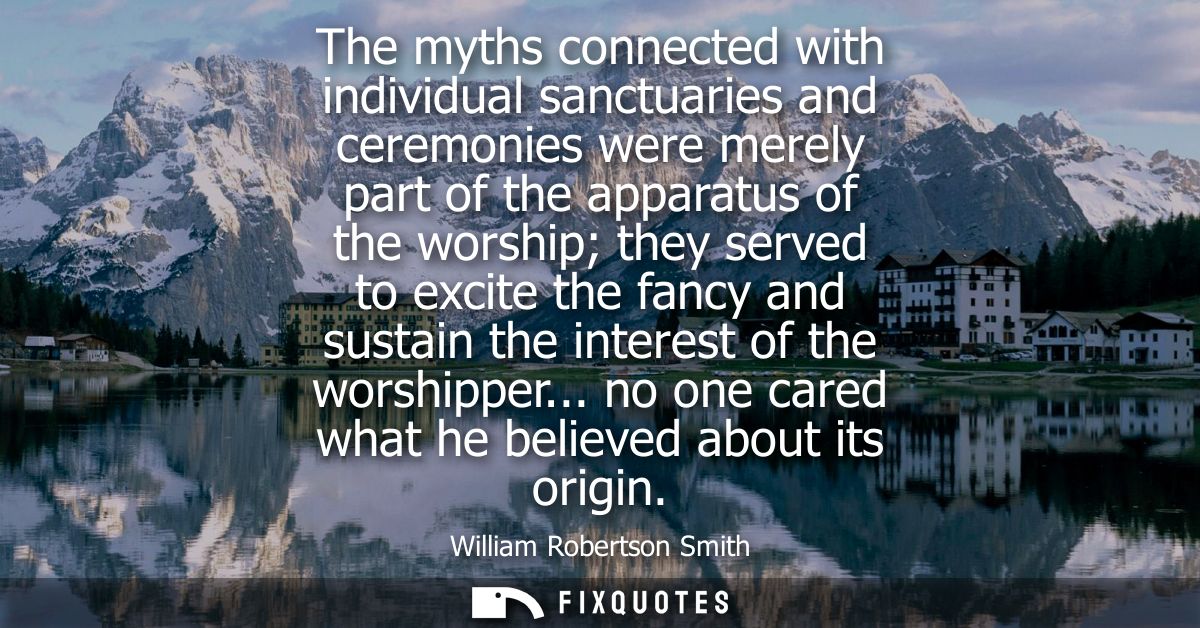"The myths connected with individual sanctuaries and ceremonies were merely part of the apparatus of the worship; they served to excite the fancy and sustain the interest of the worshipper... no one cared what he believed about its origin"
About this Quote
The passage from William Robertson Smith draws attention to the functional role myths played within ancient religious practices, emphasizing their position as tools or instruments within the broader system of worship rather than as objects of doctrinal belief. Myths linked to sanctuaries and religious ceremonies were valued primarily for their capacity to engage the imagination and hold the attention and enthusiasm of devotees. Through elaborate narratives and storied accounts associated with particular places or rituals, worshippers found color, drama, and emotional resonance that enriched their experience of the sacred. These stories were not ends in themselves nor rigid theological statements to which the faithful were required to mentally assent.
Smith’s observation underlines a distinction between the communal act of ritual worship and personal assent to a fixed set of dogmas about origins or metaphysical truths. The religious focus lay on practice, the repeated performance of rites, sacrifices, and ceremonies that defined the rhythm of communal life and established connection with the divine. The myths, therefore, formed a kind of narrative scaffolding, making the ceremonies intelligible, memorable, and enticing, without requiring critical scrutiny or uniform acceptance regarding their literal truth.
This perspective challenges later, post-Enlightenment tendencies to scrutinize religious stories as if they were creeds demanding belief. Within Smith’s framework, religious life in antiquity was not centered on belief in the modern, propositional sense but on participation and engagement. What mattered was not the veracity of the myths or their historical origins, but their role in vivifying the ritual, creating a sense of shared meaning, and sustaining the emotional intensity of worship. The content of belief about origins was ultimately secondary, incidental to the communal and psychological functions these myths performed within the living tradition of ritual practice.
About the Author

